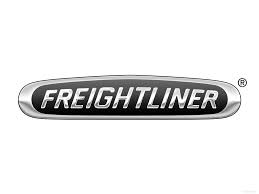Sprinter 3500 L5-2.7L DSL Turbo (2004)

Tachometer: Description and Operation
A tachometer is standard equipment on all instrument clusters. The tachometer is located to the left of the speedometer, to the left of center in the
instrument cluster. The tachometer consists of a movable gauge needle or pointer controlled by the instrument cluster circuitry and a fixed 45 degree
scale on the gauge dial face that reads left-to-right from "0" to "7". The text "rpm X 1000" imprinted on the cluster overlay near the left end of the
gauge scale identifies that each number on the tachometer scale is to be multiplied by 1000 rpm.
The tachometer graphics are white against a black field, making them clearly visible within the instrument cluster in daylight. When illuminated from
behind by the panel lamps dimmer controlled cluster illumination lighting with the exterior lamps turned On, the white graphics appear amber. The
orange gauge needle is internally illuminated. Gauge illumination is provided by Light Emitting Diode (LED) units soldered onto the instrument cluster
electronic circuit board. The tachometer is serviced as a unit with the instrument cluster.
The tachometer gives an indication to the vehicle operator of the engine speed. This gauge is controlled by the instrument cluster circuit board based
upon cluster programming and electronic messages received by the cluster from the Engine Control Module (ECM) over the Controller Area Network
(CAN) data bus. The tachometer is an air core magnetic unit that receives battery current on the instrument cluster electronic circuit board when the
instrument cluster detects that the ignition switch is in the On position. The cluster is programmed to move the gauge needle back to the low end of the
scale after the ignition switch is turned to the Off position. The instrument cluster circuitry controls the gauge needle position and provides the following
features:
-
Engine Speed Message - Each time the cluster receives an engine speed message from the ECM it will calculate the correct engine speed reading
and position the gauge needle at that relative speed position on the gauge scale. The gauge needle will continually be repositioned at the relative
engine speed position on the gauge scale until the engine stops running, or until the ignition switch is turned to the Off position, whichever occurs
first.
-
Communication Error - If the cluster fails to receive an engine speed message, it will hold the gauge needle at the last indication for about three
seconds, or until the ignition switch is turned to the Off position, whichever occurs first. After three seconds, the gauge needle will return to the
left end of the gauge scale.
The ECM continually monitors the crankshaft position sensor to determine the engine speed. The ECM then sends the proper engine speed messages to
the instrument cluster. For proper diagnosis of the crankshaft position sensor, the ECM, the CAN data bus, or the electronic message inputs to the
instrument cluster that control the tachometer, a DRBIII(R) scan tool is required. Refer to the appropriate diagnostic information.
